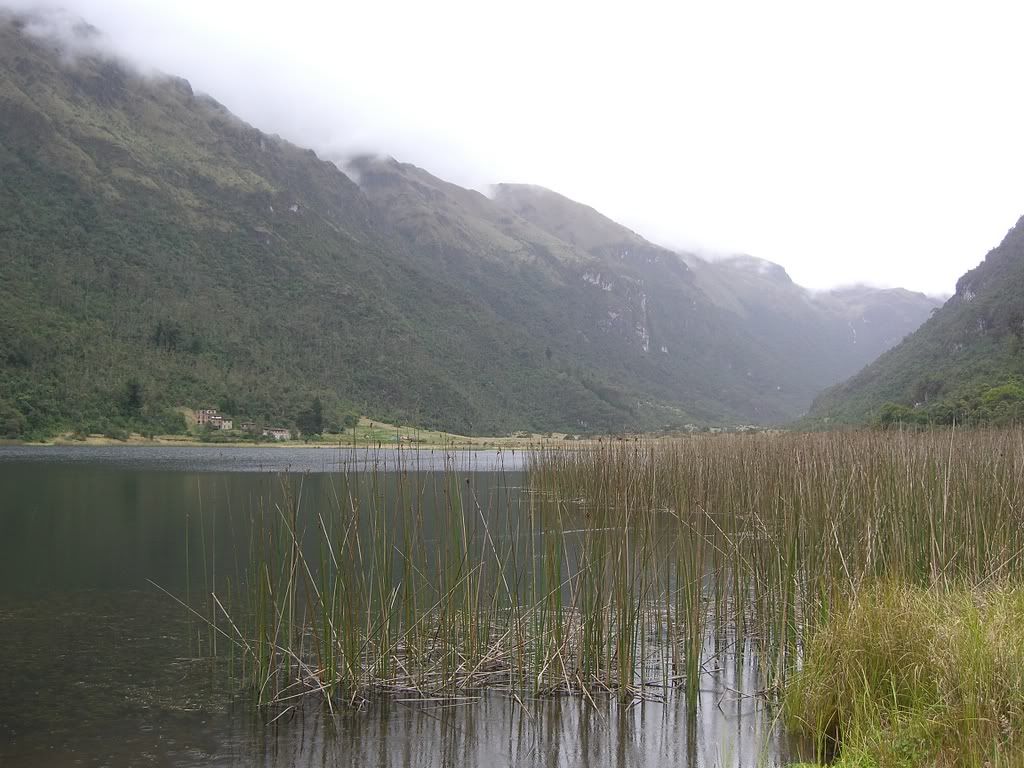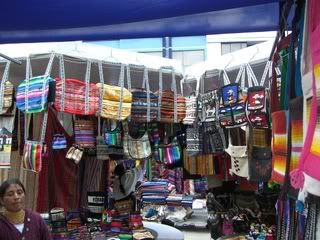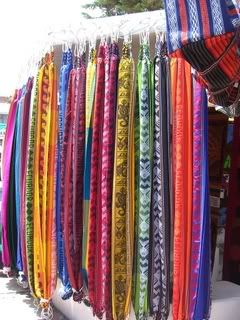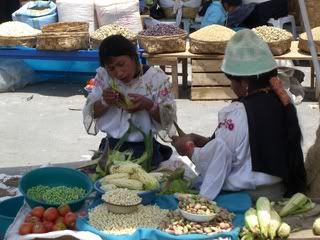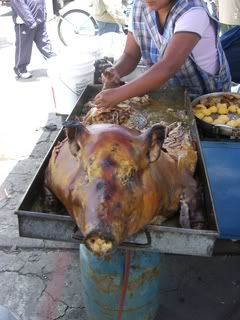Ecuador 10 – El Cajas National Park
Saturday, November 24th, 2007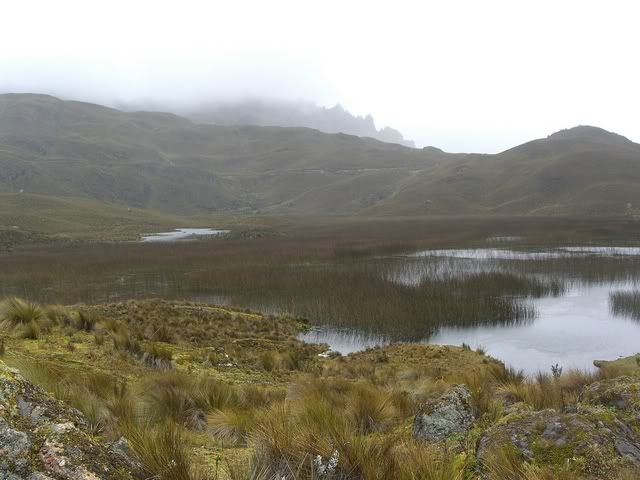
El Cajas National Park, Ecuador (between Cuenca and Guayaquil)
After spending a few days in the fine city of Cuenca, it was time to get back to nature. When in Cuenca and seeking nature…one heads to Cajas National Park. Cajas is a beautiful, high altitude park with lots of flora…a little bit of fauna…and roughly 270 lakes and ponds. Cajas is interesting in that it has quite a lot of life (both animal and plant) for having an altitude that tops 4600 meters (or 15,000 feet for my American readers).
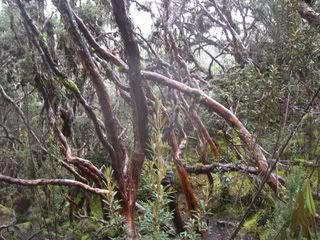
Through the forest in Cajas NP
I was joined on my hike through Cajas by a local guide and two other travelers…a woman named Karen from Norway and a man-whose-name-escapes-me from the Netherlands. Since Cajas is so high it is almost always in a cloud…read: it is rainy pretty much all of the time. No matter, the scenery is beautiful and quite interesting so we barely noticed the mud…though we did notice the lack of oxygen as we climbed.
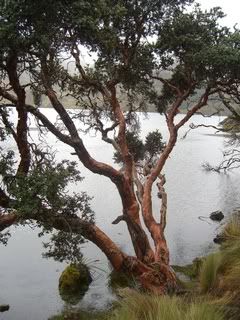
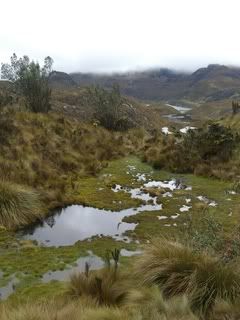
While not native to the area, the many lakes in Cajas are filled with trout as the conditions for their existence are ideal. As in the rest of the world, trout (trucha) are a popular fish so the lakes are stocked with them and many trucha farms exist around the city of Cuenca. After the hike we headed to a local trucha farm/restaurant for lunch where I had a really yummy fried trout. After lunch it was off to a different section of the park for some bird watching and more hiking. We saw some bird that was rare but I missed its name and since my little old digital camera has mimimal zoom capabilities I have no photo. I do however, have quite a few more photos of the scenery than I have things to type about so this post will mostly be pictures. Naturally, I do have some random trivia to share with you all and here it is:
Useless Trivia About Both Ecuador and the World’s National Park Systems
-
There are 38 national parks in Ecuador…run both by the government and private foundations. The first to be created was the Galapagos in 1959 and while Ecuador has been zealous in the initiation of the national park system they haven´t been so great at keeping them up and maintaining them.
-
With its relatively small territory (109.483 square miles), 0.17% of the planet’s land surface, Ecuador was ranked among one of the 17 most biodiverse countries in the world. Ecuador holds more than 11% of all the land vertebrates in the world (mammals, birds, amphibians and reptiles), 16.087 vascular plant species and approximately 600 species of marine fish. And there is still a lot to learn about Ecuador’s diversity, especially about invertebrates and microoganims. Among the “mega diverse” countries, Ecuador holds the biggest biodiversity of land vertebrates per area.
-
The first effort by any government to set aside such protected lands was in the United States, on April 20, 1832, when President Andrew Jackson signed legislation to set aside four sections of land around what is now Hot Springs, Arkansas to protect the natural, thermal springs and adjoining mountainsides for the future disposal of the US government. It was known as the Hot Springs Reservation. However no legal authority was established and federal control of the area was not clearly established until 1877. The world’s first “official” national park was Yellowstone NP established in 1872 in the United States.
-
The number of areas now managed by the National Park Service in the United States consists of 391 different sites, of which only 58 carry the designation of National Park.
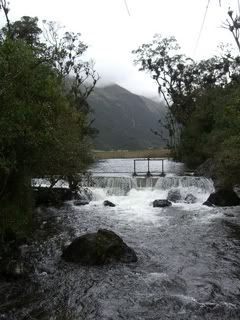
-
Following the idea established in Yellowstone there soon followed parks in other nations. In Australia, the Royal National Park was established just south of Sydney in 1879. In Canada, Banff National Park (then known as Rocky Mountain National Park) became its first national park in 1885. New Zealand had its first national park in 1887. In Europe the first national parks were a set of nine parks in Sweden in 1909. Europe has 370 national parks at the moment.[2] In 1926, the British administration in South Africa designated Kruger National Park as the nation’s first national park. After World War II, national parks were founded all over the world. The Vanoise National Park in the Alps was the first French national park, created in 1963 after public mobilization against a touristic project.
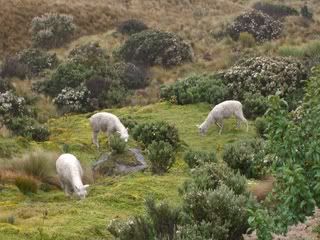
Some fauna…llamas
OK, so I’m a little light on content today but what more can you say really? We went hiking and it was nice. Never fear though…I’m not going to leave you all blogless while I’m off gallivanting through the Galapagos Islands. I’ve discovered a feature in my blog software whereas I can type up a couple of posts but have them released sometime in the future. We’re going to give this a try…I make no promises, but this week while I’m sailing the Pacific on the catamaran Nemo II my faithful readers should still get their Extravaganza fix. And if it doesn´t work…well, I guess you’ll all have a lot to catch up on when I return. Type to you next week!
PS. I didn’t get the delayed post function working for Ecuador 11 so two posts on the same day…lucky you! I think I did get it working for Ecuador 12 so if all goes well it should turn up on Friday. I’m off the boat on Sunday December 2 so until then…
